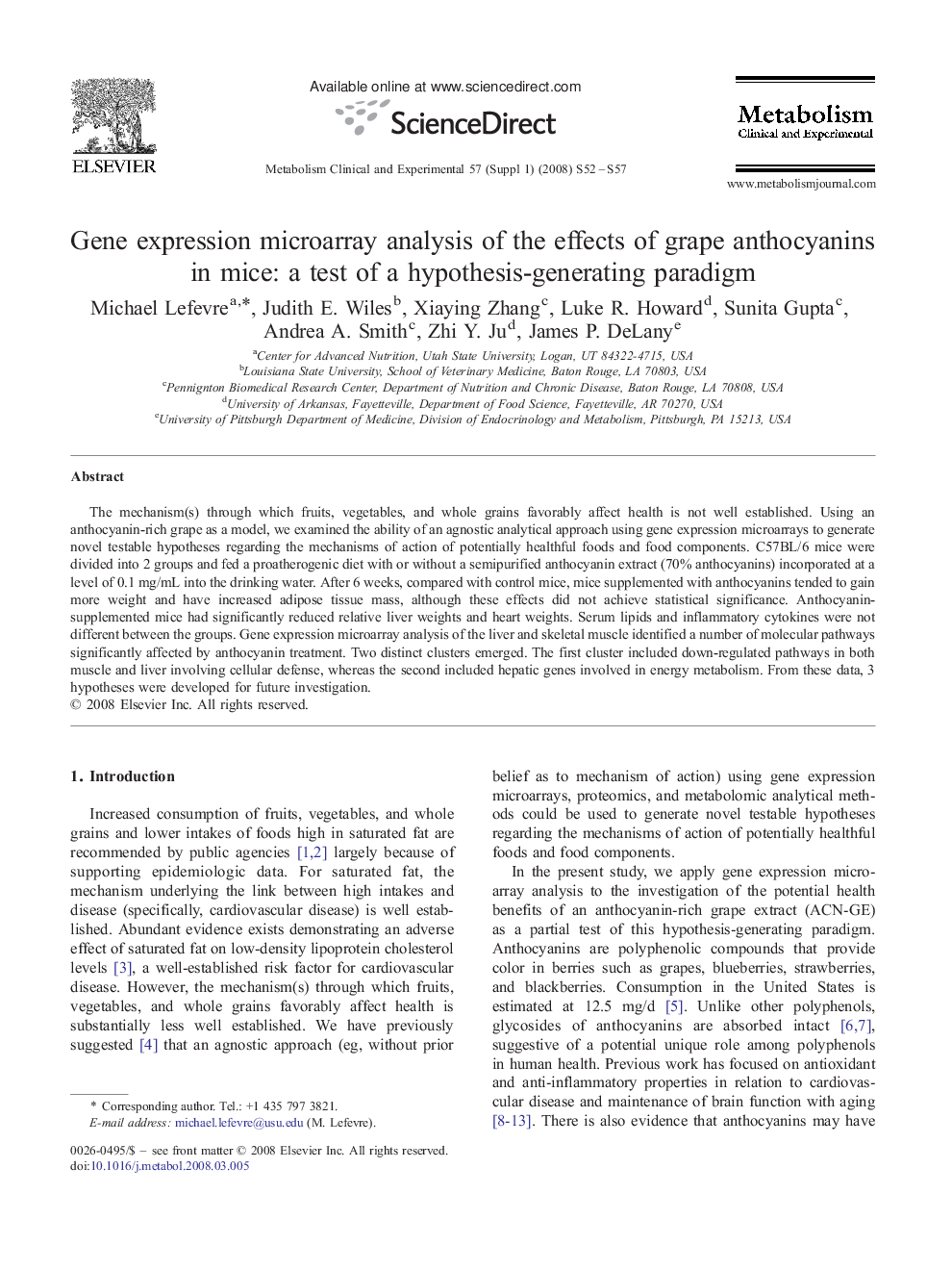| Article ID | Journal | Published Year | Pages | File Type |
|---|---|---|---|---|
| 2806798 | Metabolism | 2008 | 6 Pages |
The mechanism(s) through which fruits, vegetables, and whole grains favorably affect health is not well established. Using an anthocyanin-rich grape as a model, we examined the ability of an agnostic analytical approach using gene expression microarrays to generate novel testable hypotheses regarding the mechanisms of action of potentially healthful foods and food components. C57BL/6 mice were divided into 2 groups and fed a proatherogenic diet with or without a semipurified anthocyanin extract (70% anthocyanins) incorporated at a level of 0.1 mg/mL into the drinking water. After 6 weeks, compared with control mice, mice supplemented with anthocyanins tended to gain more weight and have increased adipose tissue mass, although these effects did not achieve statistical significance. Anthocyanin-supplemented mice had significantly reduced relative liver weights and heart weights. Serum lipids and inflammatory cytokines were not different between the groups. Gene expression microarray analysis of the liver and skeletal muscle identified a number of molecular pathways significantly affected by anthocyanin treatment. Two distinct clusters emerged. The first cluster included down-regulated pathways in both muscle and liver involving cellular defense, whereas the second included hepatic genes involved in energy metabolism. From these data, 3 hypotheses were developed for future investigation.
